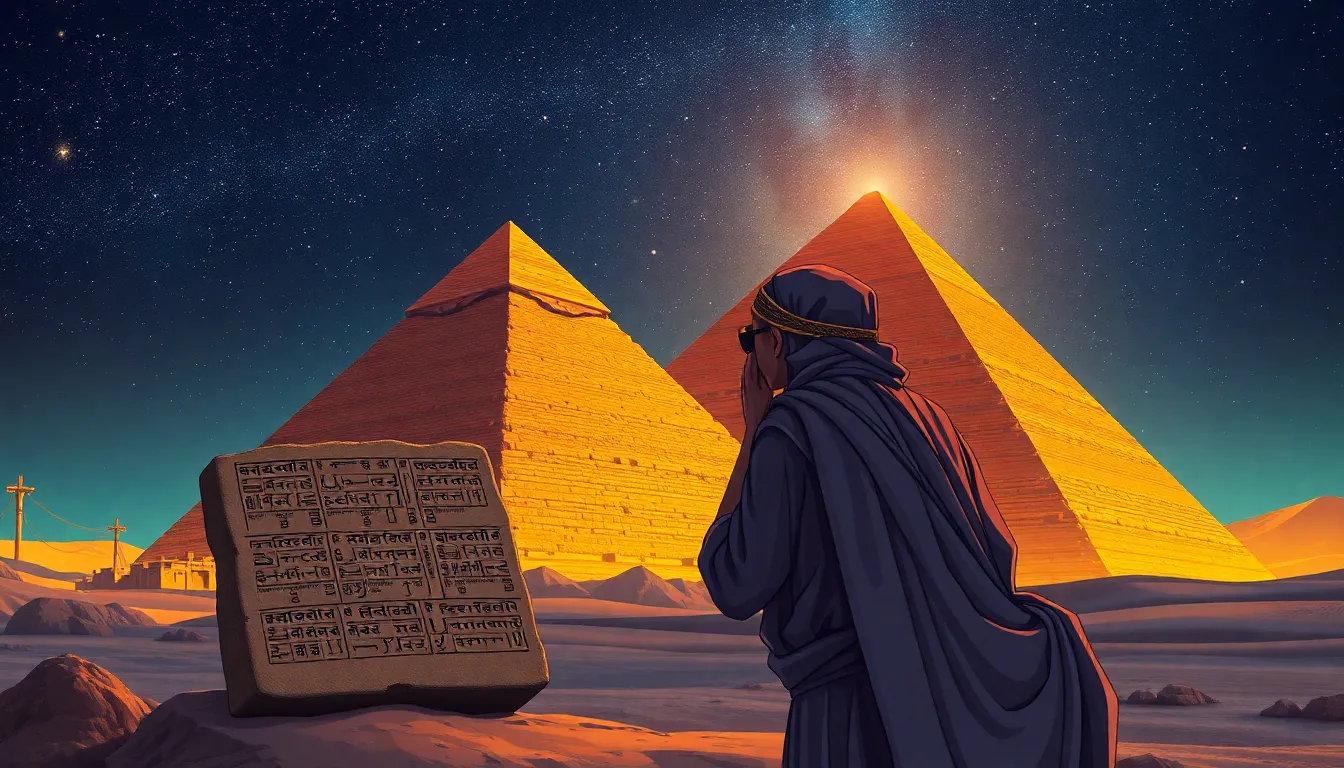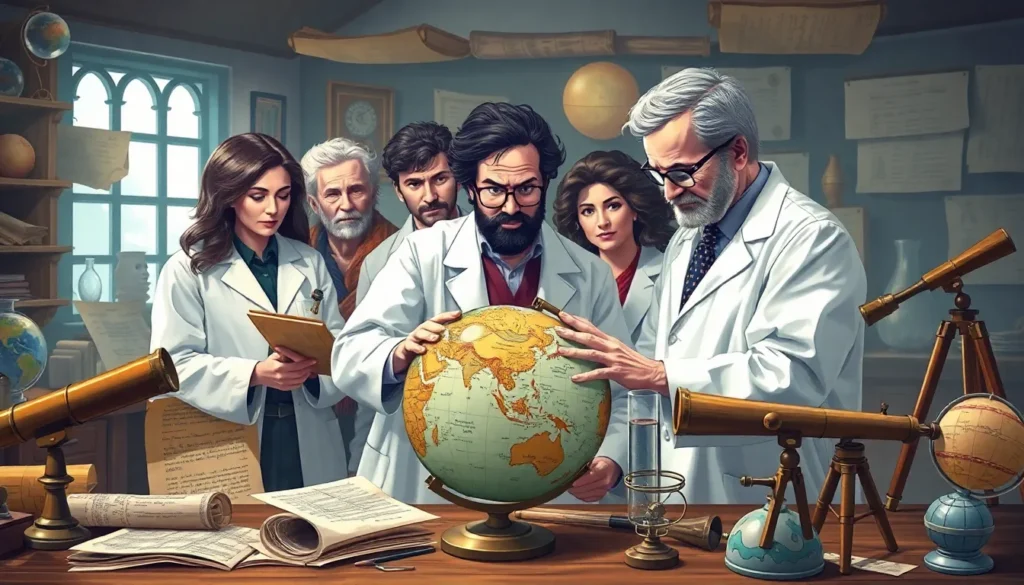The history of science is like a thrilling rollercoaster ride, filled with unexpected twists, daring discoveries, and a few hair-raising mishaps. From ancient philosophers pondering the mysteries of the universe to modern-day scientists unraveling the complexities of DNA, this timeline showcases humanity’s relentless quest for knowledge. It’s a journey that’s not just about equations and experiments; it’s a saga of curious minds and groundbreaking ideas that changed the world.
History of Science Timeline
The history of science spans thousands of years and encompasses significant milestones. Ancient civilizations like Mesopotamia contributed to early astronomical observations and the development of mathematics. Greek philosophers, including Aristotle and Archimedes, laid foundational principles for scientific inquiry during the classical era.
The Middle Ages saw a shift, with Islamic scholars preserving and expanding upon earlier works. Notable figures such as Alhazen advanced optics, while Avicenna’s contributions to medicine influenced Europe. The Renaissance marked a revival of classical knowledge, leading to groundbreaking innovations in diverse fields.
The Scientific Revolution in the 16th and 17th centuries transformed the landscape of science. Copernicus challenged geocentric views, which paved the way for Galileo’s experiments and Newton’s laws of motion. Each development challenged existing paradigms and prompted an empirical approach to understanding nature.
The 19th century introduced major advancements in various disciplines, including chemistry, physics, and biology. Dalton’s atomic theory laid groundwork for modern chemistry, while Darwin’s theory of evolution revolutionized biology. These paradigms significantly reshaped scientific thought.
In the 20th century, breakthroughs in technology and theory emerged rapidly. Einstein’s theory of relativity and the advent of quantum mechanics redefined physics. Simultaneously, advancements in genetics enhanced comprehension of heredity, culminating in the mapping of the human genome.
From these milestones, the spirit of scientific exploration continues to evolve. Today, interdisciplinary approaches integrate knowledge from various fields. As contemporary scientists confront global challenges, their dedication to curiosity and innovation remains steadfast in the ongoing quest for understanding.
Ancient Civilizations

Ancient civilizations laid crucial foundations for the scientific journey, shaping early understanding and practices.
Contributions of Mesopotamia
Mesopotamia significantly advanced astronomy, displaying a sophisticated grasp of celestial movements. The Babylonians, in particular, created detailed star catalogs that guided agricultural cycles. They developed a base-60 number system, influencing geometry and time measurement. Additionally, early mathematicians utilized clay tablets for calculations, marking the inception of written mathematical records. These innovations provided essential tools for trade, governance, and navigation, establishing a prototype for future scientific disciplines.
Egyptian Advancements
Egyptian civilization made notable contributions in various scientific domains, particularly medicine and engineering. The Egyptians excelled in anatomy through mummification practices, leading to insights into human physiology. They developed medical texts, which included surgical techniques and herbal remedies, laying groundwork for future medical practices. Furthermore, monumental architecture exemplified their engineering skills, evident in the construction of pyramids. Techniques like surveying and geometry were essential for these projects, reinforcing the application of scientific principles in practical contexts.
Classical Period Developments
The classical period significant for the flourishing of scientific thought and inquiry. Greek philosophers and Roman scholars contributed directly to foundational scientific knowledge.
Greek Philosophers and Scientists
Greek philosophers laid essential groundwork for scientific methods. Aristotle emphasized observation and classification, influencing disciplines like biology and physics. Plato’s ideas encouraged questioning the natural world, leading to early scientific theories. Archimedes advanced understanding in mathematics and physics, applying principles to levers and buoyancy. Pythagoras explored numerical relationships, which became crucial for mathematics. Their collective thoughts formed a basis, shaping future inquiry and academic disciplines.
Roman Contributions to Science
Roman contributions enhanced engineering and practical applications of science. Galen’s work in medicine combined anatomical studies with clinical observation, significantly impacting medical knowledge. Vitruvius documented engineering principles, focusing on architecture and design in his work “De Architectura.” Pliny the Elder compiled information on natural history, providing insights into botany and mineralogy. Roman advancements in aqueducts and public health exemplified applied science. These contributions reflected a desire for improved infrastructure and public welfare, laying groundwork for future scientific exploration.
The Middle Ages
The Middle Ages significantly shaped scientific thought. Scholars preserved ancient knowledge while contributing new insights.
Islamic Golden Age
Islamic scholars made remarkable advancements during the Islamic Golden Age. They translated and preserved Greek texts, ensuring that vital knowledge survived. Notable figures like Alhazen advanced optics, exploring properties of light and vision. Avicenna, a key figure in medicine, authored “The Canon of Medicine,” blending empirical observation with medical science. Furthermore, the development of algebra by mathematicians like Al-Khwarizmi provided a foundation for modern mathematics. These contributions laid crucial groundwork for future scientific exploration, fostering a climate of inquiry and innovation.
European Scholasticism
European Scholasticism emerged as a dominant intellectual movement. Rooted in medieval universities, it sought to reconcile faith and reason. Thinkers like Thomas Aquinas integrated Aristotelian philosophy with Christian theology. This combination enhanced understanding of natural phenomena and human existence. Scholastic methods emphasized logical reasoning and debate, shaping educational approaches in Europe. This period fostered an environment for scientific inquiry, paving the way for later developments during the Renaissance. As questions about nature and existence flourished, the stage was set for a transformative era in science.
The Renaissance and Scientific Revolution
The Renaissance and Scientific Revolution transformed scientific thought and practices. This period spanned the 14th to 17th centuries, prioritizing observation and experimentation.
Key Figures of the Renaissance
Copernicus proposed heliocentrism, challenging the long-standing geocentric model. Galileo advanced the use of telescopes, providing critical support for Copernican theories. Kepler developed laws of planetary motion, which refined earlier astronomical observations. Newton articulated the laws of motion and universal gravitation, bringing clarity to the understanding of forces. Vesalius revolutionized medicine through anatomical studies, correcting centuries-old misconceptions of human anatomy. These figures not only shaped their disciplines but also laid the groundwork for future scientific inquiry.
Major Scientific Discoveries
During the Renaissance, key scientific discoveries emerged. The printing press facilitated the dissemination of ideas, allowing works from figures like Galileo and Newton to reach a wider audience. Advancements in anatomy through dissections led to significant improvements in medical knowledge. The introduction of the scientific method encouraged systematic experimentation, enhancing the rigor of scientific studies. Astronomy underwent a remarkable transformation with improved telescopic technologies, leading to new revelations about celestial bodies. Each discovery contributed to an evolving landscape of knowledge, fostering an environment ripe for exploration and innovation.
The Modern Era of Science
The modern era of science reflects tremendous advancements that shaped current understanding and technology.
19th Century Innovations
Innovations throughout the 19th century laid the groundwork for modern scientific thought. Chemistry saw Dalton’s atomic theory unraveling the building blocks of matter, while thermodynamics emerged as a key discipline. In biology, Darwin’s theory of evolution redefined the understanding of species and natural selection. Physics made significant strides with Maxwell’s equations, which united electricity and magnetism. These discoveries sparked further exploration, allowing scientists to challenge old beliefs and inspire curiosity across disciplines.
20th Century Breakthroughs
Breakthroughs in the 20th century accelerated scientific progress at an unprecedented pace. Einstein’s theory of relativity altered perceptions of time and space, while quantum mechanics introduced counterintuitive principles that revolutionized physics. Genetics experienced a paradigm shift with the discovery of DNA’s double helix structure, leading to advancements in biotechnology and medicine. Space exploration flourished with the launch of satellites and the moon landing, expanding humanity’s reach beyond Earth. These pivotal moments formed a foundation for ongoing exploration and innovation, driving science into the future.
Conclusion
The history of science is a testament to humanity’s relentless quest for knowledge. It illustrates how curiosity and innovation have shaped our understanding of the world. From ancient civilizations to modern breakthroughs, each era has contributed unique insights and advancements that continue to influence contemporary science.
As scientists tackle pressing global challenges today, they stand on the shoulders of giants. The evolution of scientific thought remains a dynamic journey, driven by the same inquisitive spirit that sparked the earliest discoveries. This ongoing pursuit highlights the importance of collaboration and interdisciplinary approaches in addressing the complexities of the modern world.

